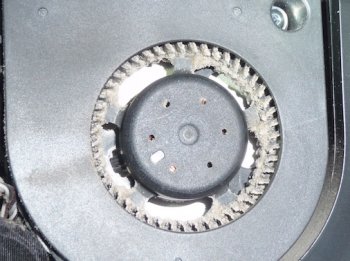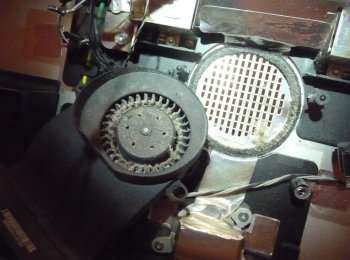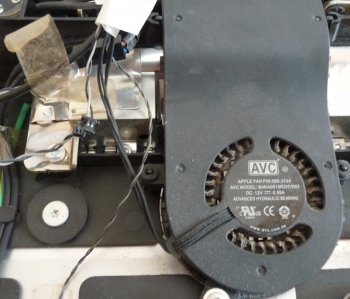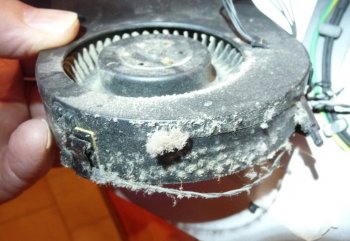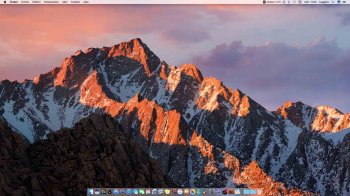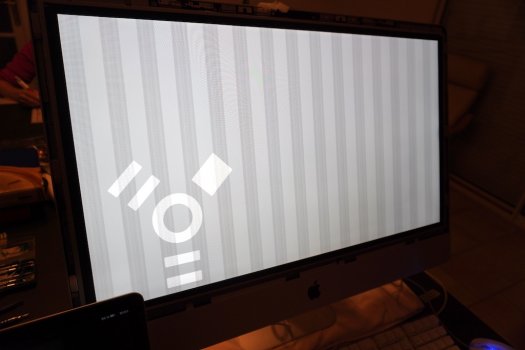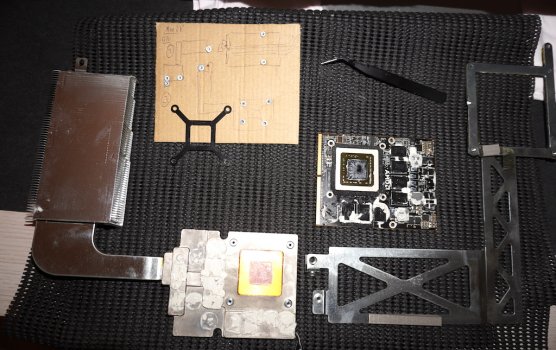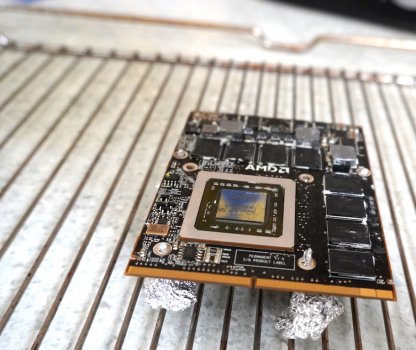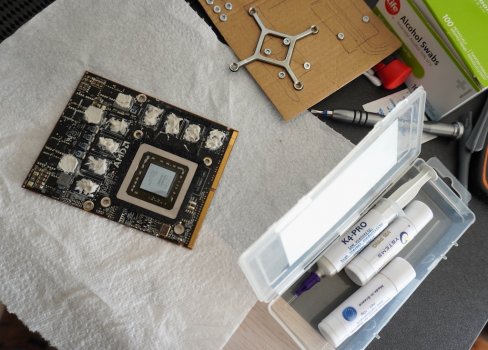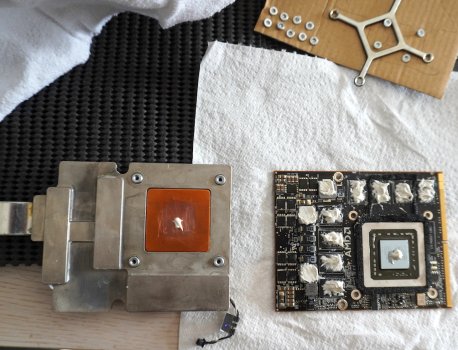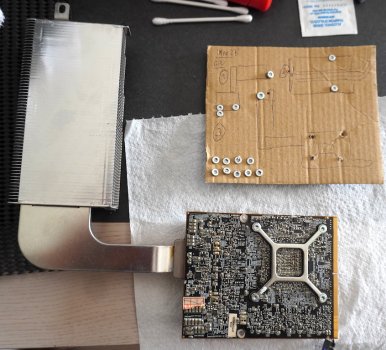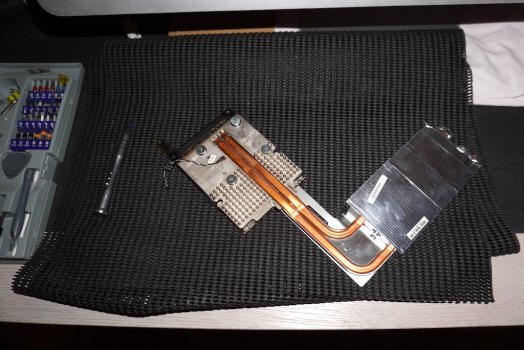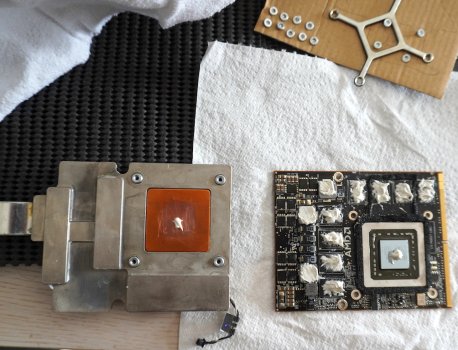A colleague mentioned last week that his late 2009 iMac 27" (2.8GHz i7) will no longer boot correctly, seeing graphical artifacts on-screen.
Knowing that the graphics card in many 27" iMac's of this period were reported as defective, (especially this ATI Radeon HD4850), and as he cannot use it as is, doesn't wish to spend any serious money on this almost 9 year old machine. If I knew of a good amateur or a pro who offered a guaranteed reflow service, I would suggest that this would be the most cost-effective - and hopefully long-term solution. However I understand such GPU reflow specialists are a rare breed, and I know nobody, especially in SW France where we're located.
So I offered him my humble services - to remove the graphics card, and rebake in an attempt to reflow the GPU.
I've never done this, but over the last 48hrs have read a great deal about the procedure, and also watched dozens of YT videos - in different languages - and frankly can't wait to get started........
However I'm not too naive to realize that there is a huge difference between theory and practice, although I do claim to be proficient in repairing most Apple PowerBooks, MacBooks, G4 Cubes, and several G3/G4/G5 iMac's.
So, before going any further, I have a number of questions, and would be extremely greatful if Razzerman, Sofad, or anyone else could address the following queries, given that I have no proper reflow station and propose doing this using a domestic cooker (with digital temp display, and low/high fan speeds).
1.My understanding is that on the 2009 27" (iMac11,1 model A1312) the Radeon HD4850 graphics card can be removed without disturbing the motherboard. Confirmation pls? iFixIt doesn't appear too clear on this.
2. Is 200 degrees centigrade (392F) for 10mins considered the optimum 'sweet spot' for baking?
3. Should a liquid flux be applied around/beneath the GPU? If so which one? Would it be a mistake not using a liquid flux?
4. Athough the videos I've watched don't show it, would it not be beneficial to wrap baking foil all around the graphics card, and then cut an opening to expose just the GPU on top and bottom?
5. One apparent sucessful 'baker', put a few copper coins on the GPU, allegedly to add a little weight and assist the process. Is this considered a useful addition to the procedure?
6. On completion, which fan control app would you advise? HDD only, no SSD fitted.
7. Any other 'must-know' tips or tricks?
Finally what are your own experiences in terms of months or years of sucess after such an iMac GPU reflow procedure.
As a footnote, I also have a somewhat similar mid 2010 27" iMac (iMac11.3 model 2.8GH i5) with the Radeon HD5750, which is still performing perfectly (reaches out to touch wood, and caresses the wife on the head) ........
This being one more reason why I'm eager to get started with this, as it will at least be a good learning curve just in case touching my wife's head doesn't turn out to be quite the lucky charm I expected.
Knowing that the graphics card in many 27" iMac's of this period were reported as defective, (especially this ATI Radeon HD4850), and as he cannot use it as is, doesn't wish to spend any serious money on this almost 9 year old machine. If I knew of a good amateur or a pro who offered a guaranteed reflow service, I would suggest that this would be the most cost-effective - and hopefully long-term solution. However I understand such GPU reflow specialists are a rare breed, and I know nobody, especially in SW France where we're located.
So I offered him my humble services - to remove the graphics card, and rebake in an attempt to reflow the GPU.
I've never done this, but over the last 48hrs have read a great deal about the procedure, and also watched dozens of YT videos - in different languages - and frankly can't wait to get started........
However I'm not too naive to realize that there is a huge difference between theory and practice, although I do claim to be proficient in repairing most Apple PowerBooks, MacBooks, G4 Cubes, and several G3/G4/G5 iMac's.
So, before going any further, I have a number of questions, and would be extremely greatful if Razzerman, Sofad, or anyone else could address the following queries, given that I have no proper reflow station and propose doing this using a domestic cooker (with digital temp display, and low/high fan speeds).
1.My understanding is that on the 2009 27" (iMac11,1 model A1312) the Radeon HD4850 graphics card can be removed without disturbing the motherboard. Confirmation pls? iFixIt doesn't appear too clear on this.
2. Is 200 degrees centigrade (392F) for 10mins considered the optimum 'sweet spot' for baking?
3. Should a liquid flux be applied around/beneath the GPU? If so which one? Would it be a mistake not using a liquid flux?
4. Athough the videos I've watched don't show it, would it not be beneficial to wrap baking foil all around the graphics card, and then cut an opening to expose just the GPU on top and bottom?
5. One apparent sucessful 'baker', put a few copper coins on the GPU, allegedly to add a little weight and assist the process. Is this considered a useful addition to the procedure?
6. On completion, which fan control app would you advise? HDD only, no SSD fitted.
7. Any other 'must-know' tips or tricks?
Finally what are your own experiences in terms of months or years of sucess after such an iMac GPU reflow procedure.
As a footnote, I also have a somewhat similar mid 2010 27" iMac (iMac11.3 model 2.8GH i5) with the Radeon HD5750, which is still performing perfectly (reaches out to touch wood, and caresses the wife on the head) ........
This being one more reason why I'm eager to get started with this, as it will at least be a good learning curve just in case touching my wife's head doesn't turn out to be quite the lucky charm I expected.


